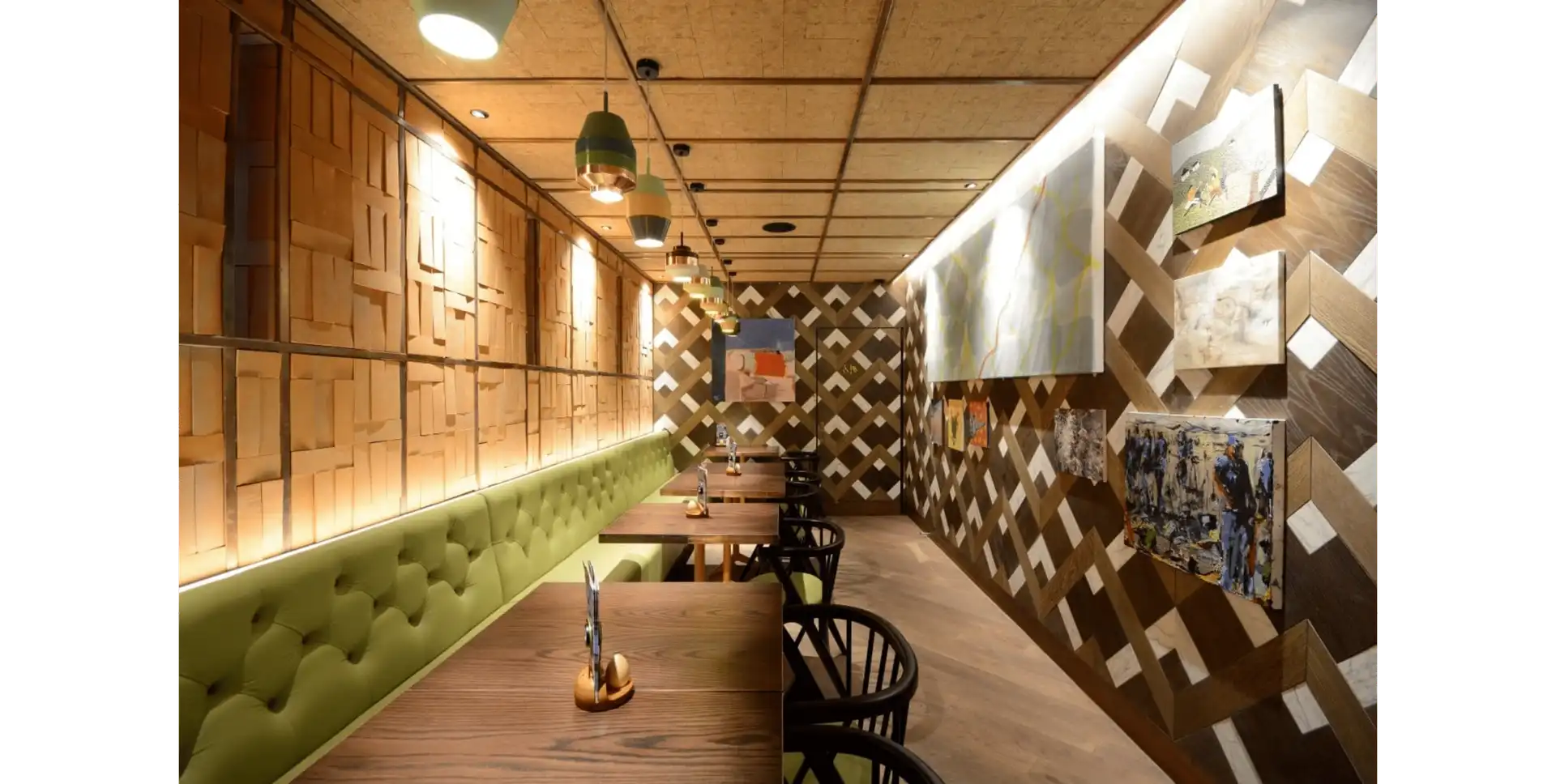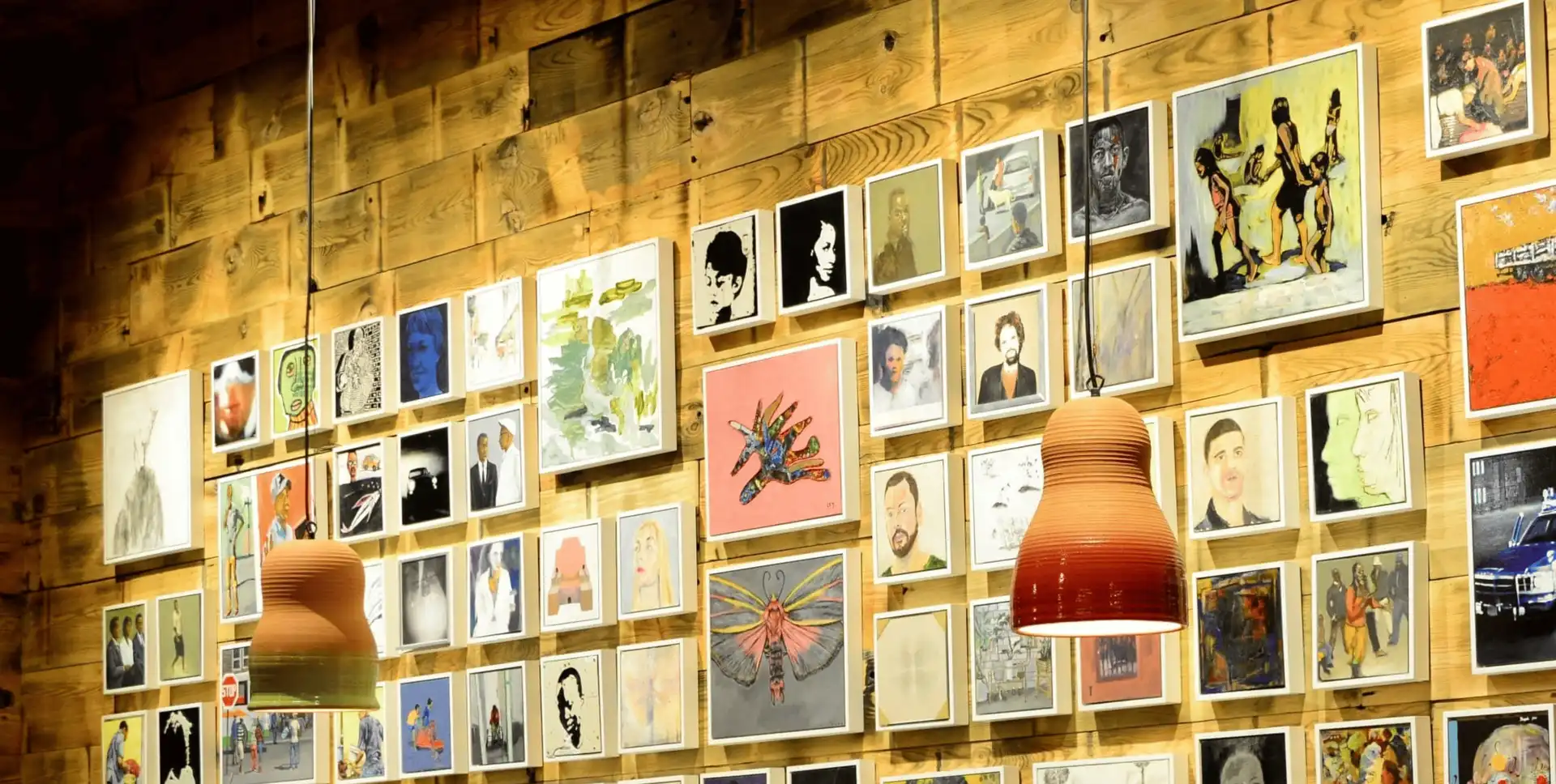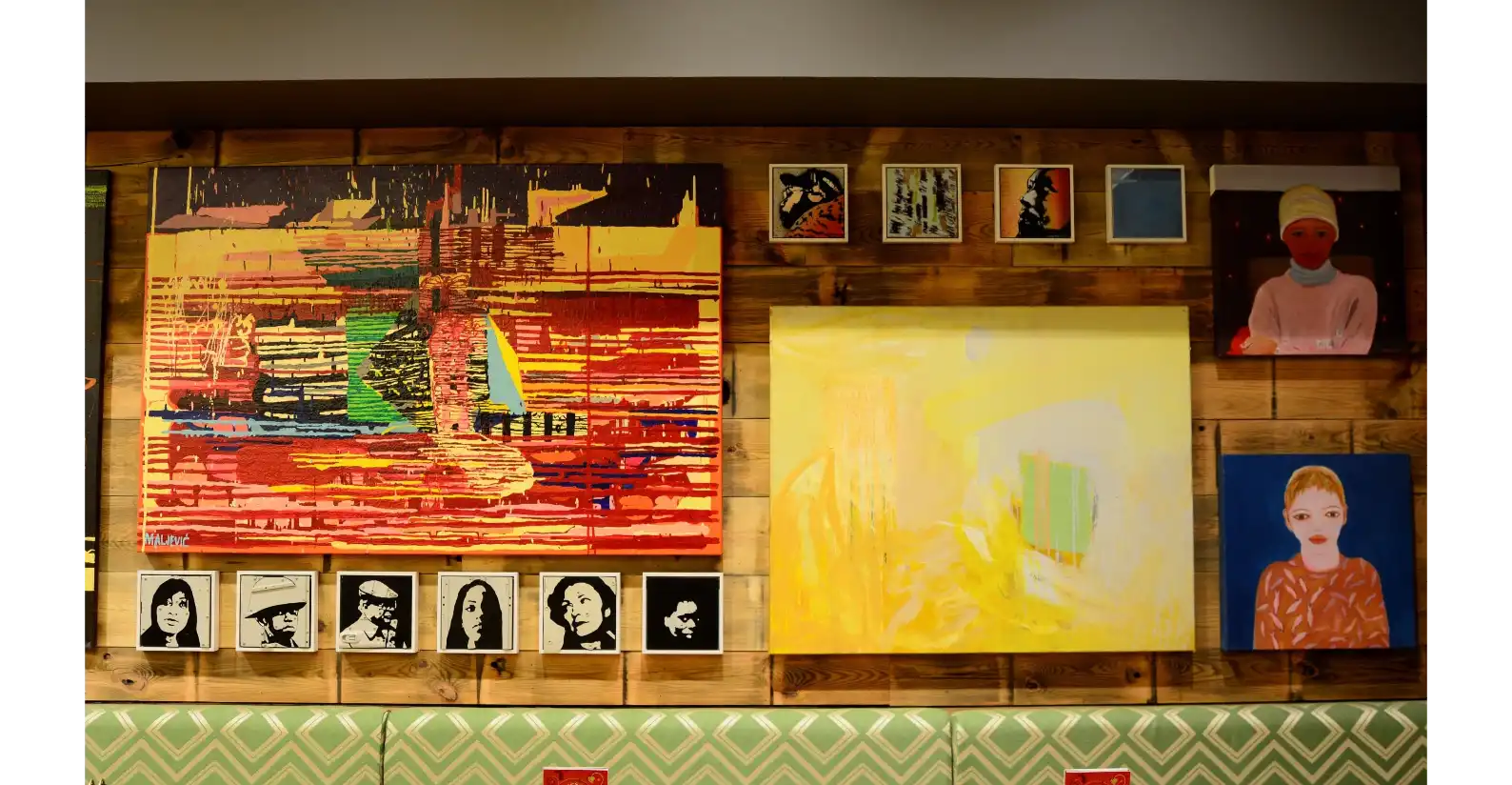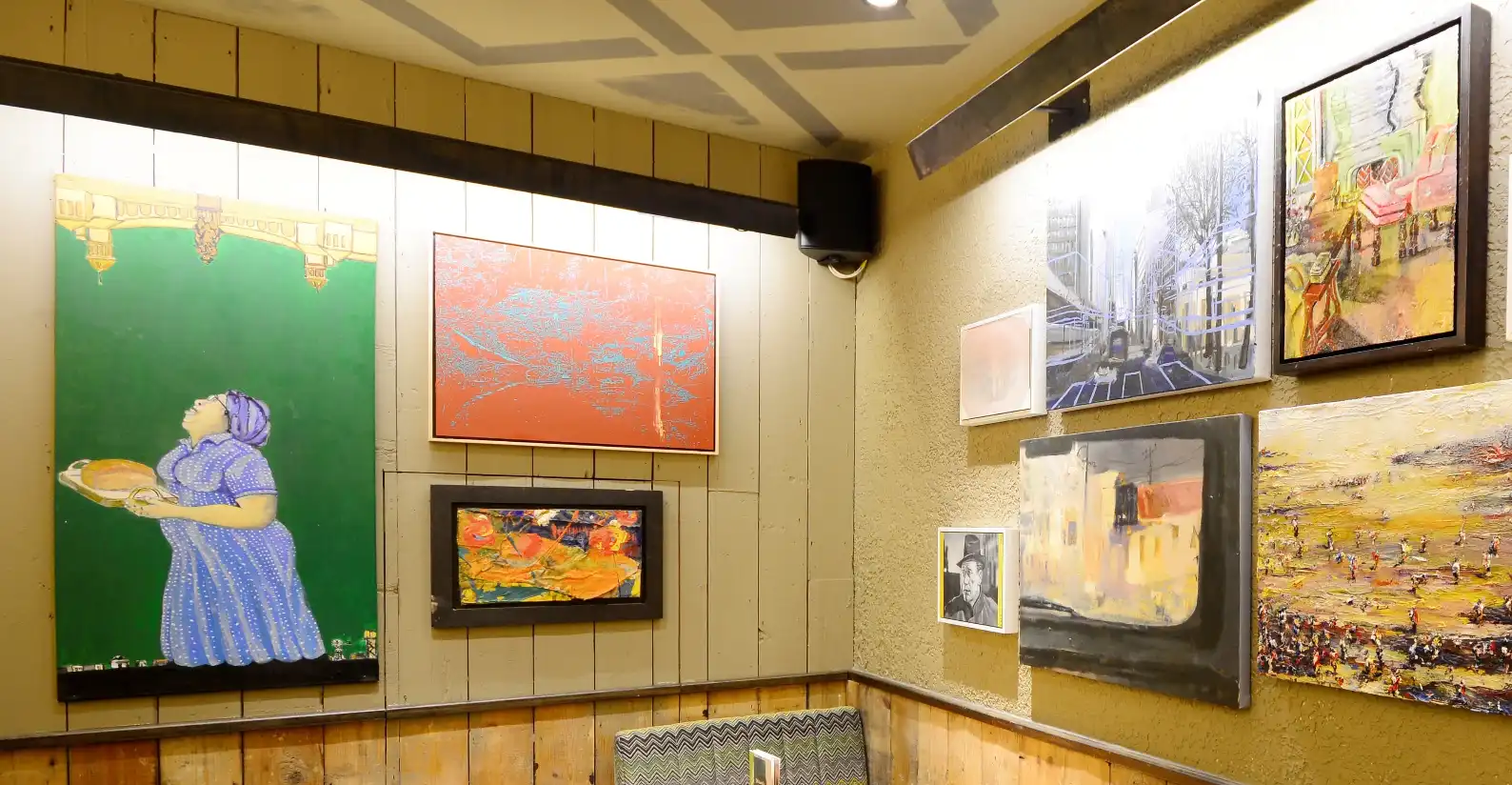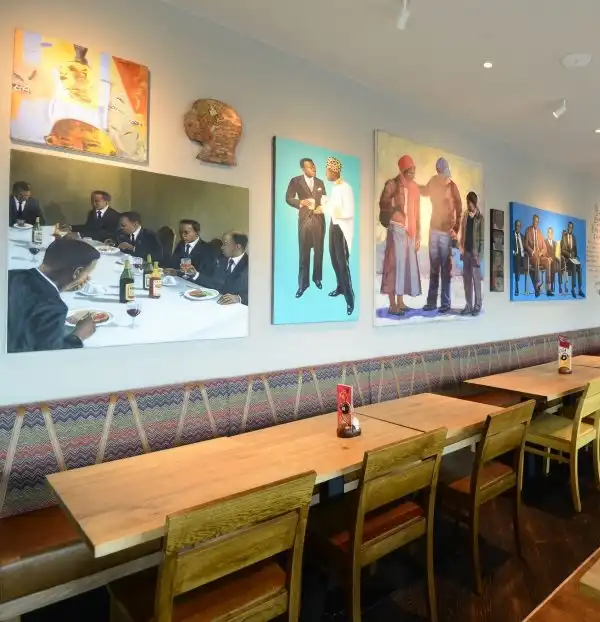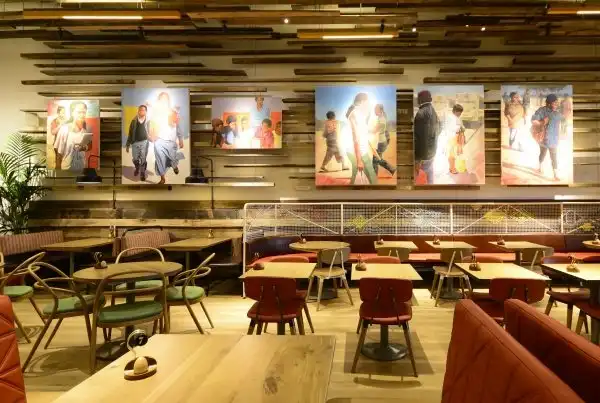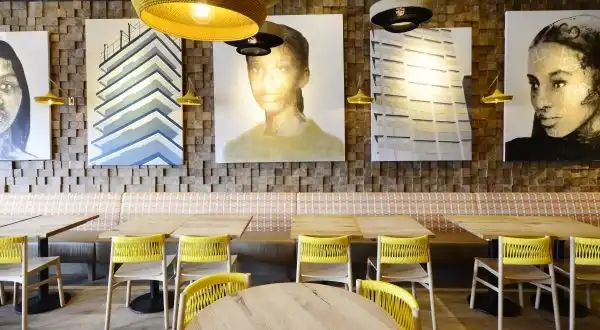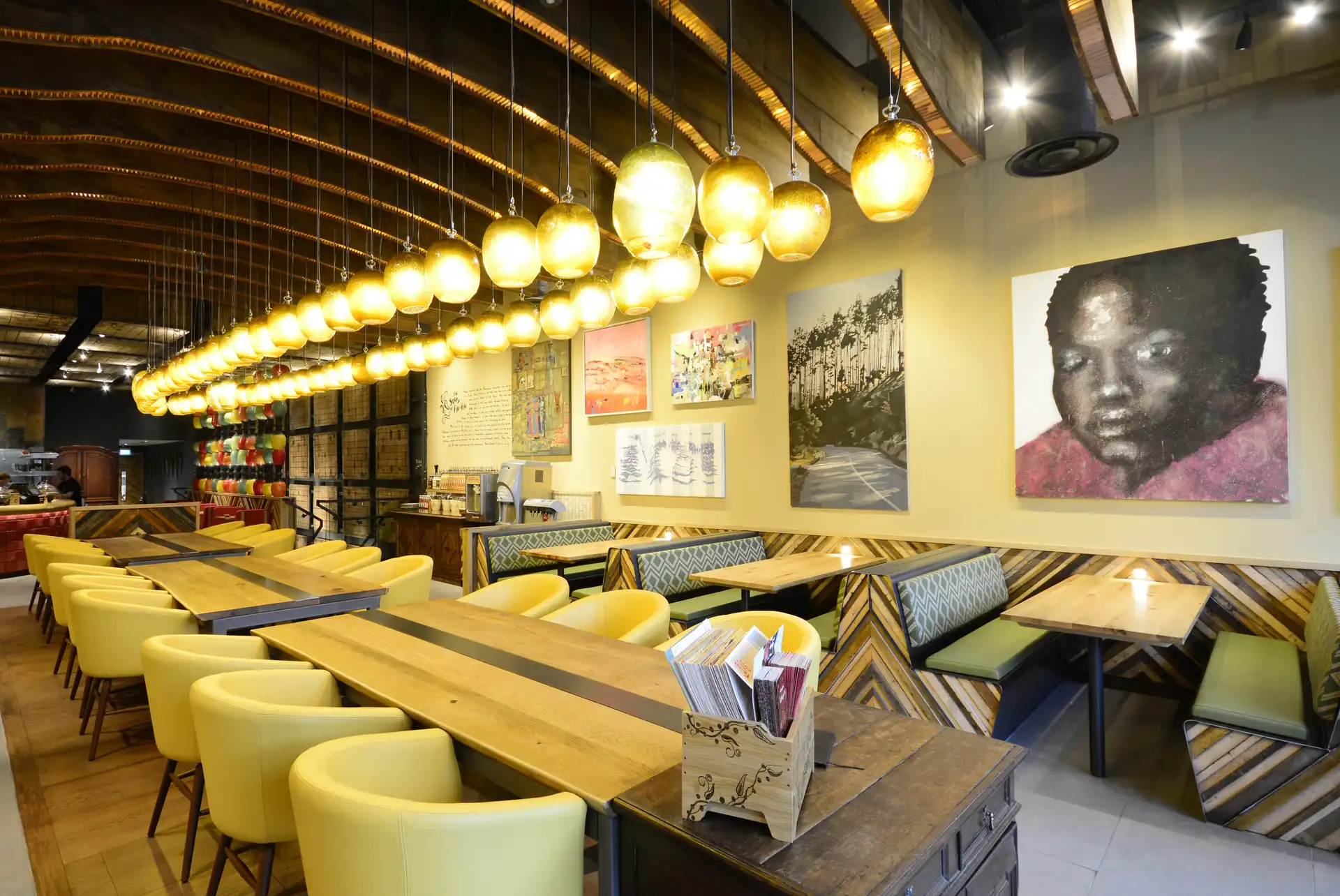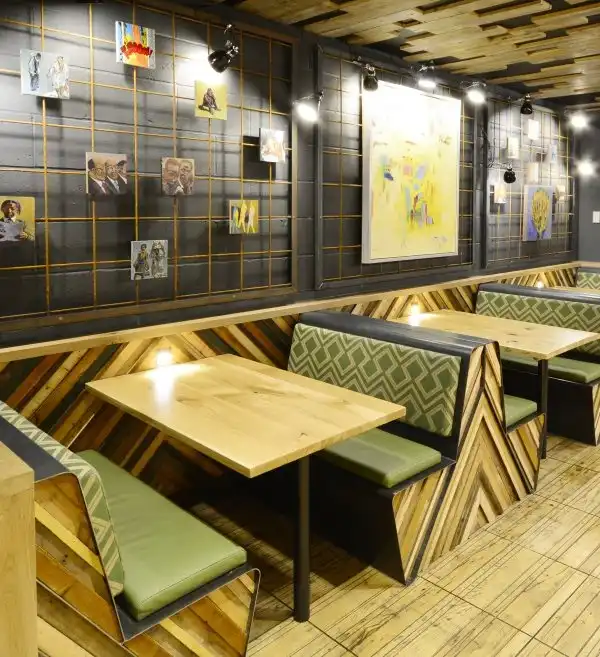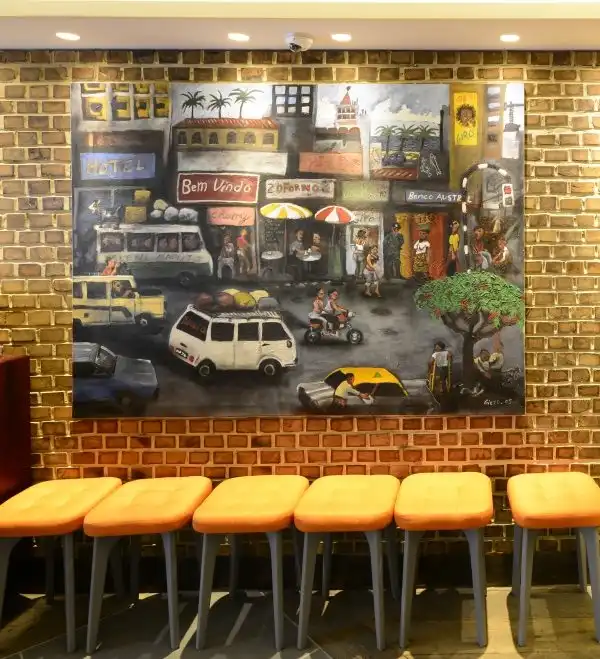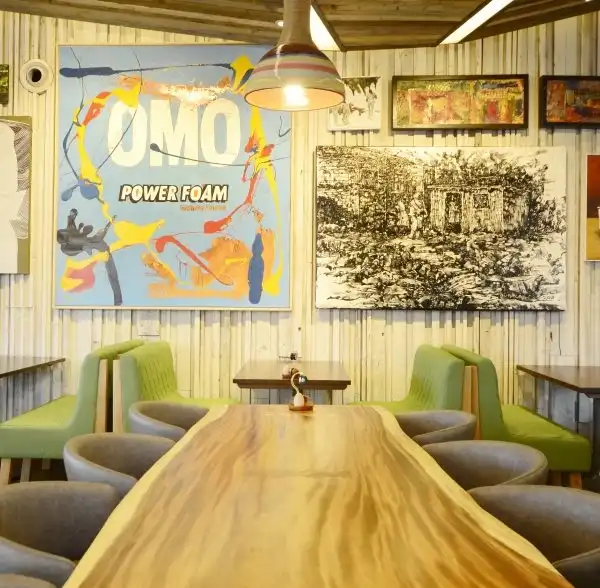Art Programs And Events
Our Galleries
They say you eat with your eyes. Well, get this. It’s not just our PERi-PERi that comes all the way from Southern Africa… Next time you visit any of one our restaurants, take a look around. See all that beautiful art? Every single piece has been created by one of our homelands brightest stars, and sent over to the U.K. for you to enjoy.
With over 9,000 pieces (and counting!), we’re officially the biggest collector of Southern African contemporary art in the world. So next time you’re waiting for your PERi-PERi fix to arrive, feast your eyes before you fill your stomach. Enjoy!
We love our art, but we love its story more. Through our long-term commitment to contemporary Southern African art, we want to make a real difference to artists' lives we work with. To make this happen, we’ve partnered with the Spier Arts Trust, who give artists in South Africa the opportunity for career development. So when you cast your eye over any one of the original pieces in our restaurants, you’re actually looking at the stories from our homeland from over 350 artists. We know art may be subjective, but there’s nothing not to love about that!
